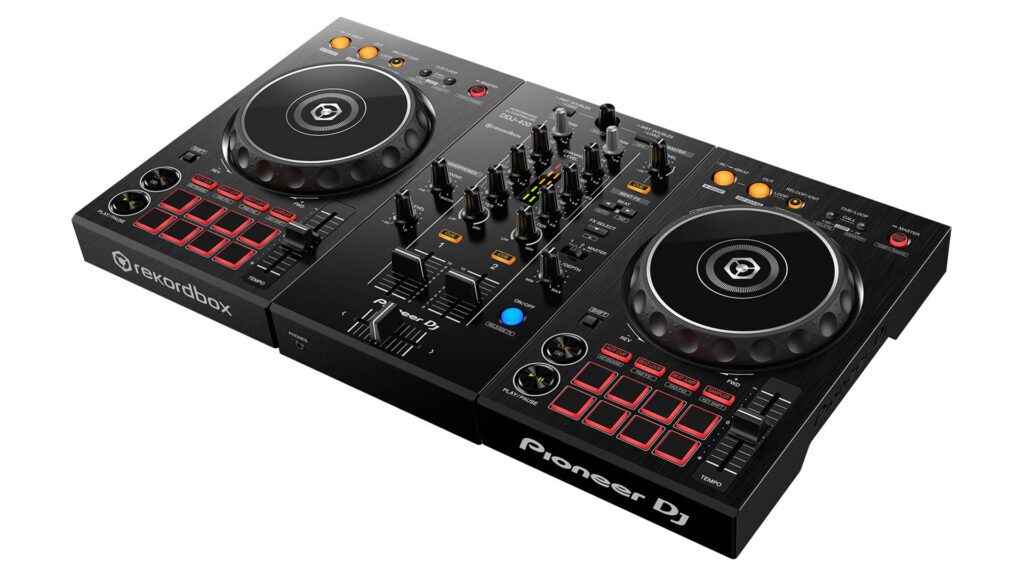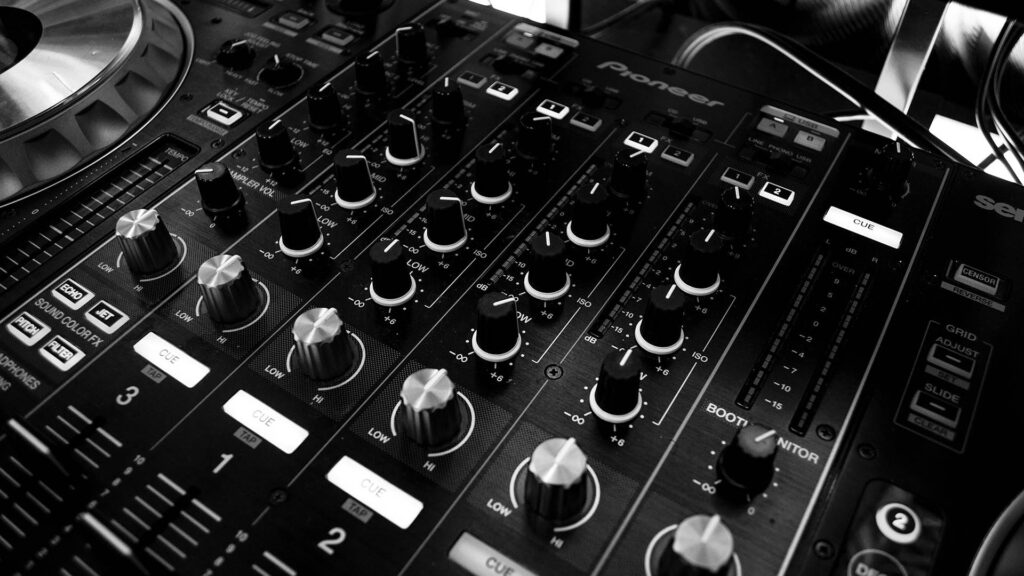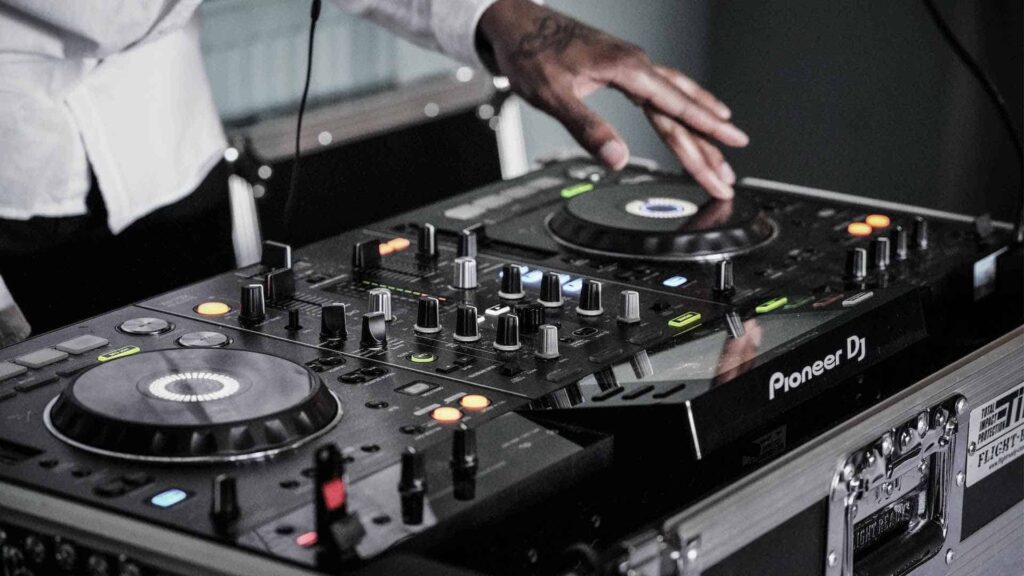The DDJ-400 is a DJ controller that has a lot of features, but is also easy to use. You can use it to control your digital music library, or you can use it as a stand-alone MIDI controller for software such as Ableton Live and FL Studio.
What Is The DDJ-400 All About?
If you’re looking for a DJ controller that will take your skills to the next level, then you need to check out the DDJ-400. This controller is packed with features that will help you take your mixing and scratching to new heights.
The DDJ-400 has a built-in 4-channel mixer so you can mix four decks at once. It also has two USB ports so you can connect it to your computer and use it as a soundcard. The controller comes with Serato DJ Lite software, but it’s also compatible with other DJ software such as Traktor and Virtual DJ.
The DDJ-400 has sixteen performance pads that you can use for loops, samples, and hot cues. There’s also a dedicated slip mode button that lets you keep the music playing even when you’re scratching or mixing.
If you’re looking for a professional-grade DJ controller, then the DDJ-400 is the perfect choice for you. It’s packed with features that will help you take your mixing and scratching to new levels.
Common Questions and Concerns
When it comes to finding the right DJ controller, there are a lot of factors to consider. With so many options on the market, it can be difficult to know where to start. Here are a few common questions and concerns that can help you narrow down your search:
What is my budget?
This is an important question to ask yourself before beginning your search. Knowing how much you are willing and able to spend will help you narrow down your options.
What do I need?
Think about what features are most important to you and your style of DJing. This will help you zero in on the right controller for your needs.
What is my skill level?
If you’re a beginner, you’ll want to look for a controller that is easy to use and has plenty of built-in tutorials or other resources to help you learn the ropes. If you’re more experienced, you may want something with more advanced features that will allow you to really show off your skills.
These are just a few of the questions you should ask yourself before choosing a DJ controller. By taking the time to think about your needs and what’s important to you, you can be sure to find the perfect

Why Should You Use It?
If you’re a DJ, then you know that having the right controller can make all the difference in your sets. A good controller can help you mix better, scratch more effectively, and generally just perform at a higher level. But what if you’re not a DJ? What if you’re just a music fan who wants to get into the mixing game? Is a controller worth your money?
The answer is a resounding yes! Even if you’re not a professional DJ, using a controller will help you take your skills to the next level. With a good controller, you’ll be able to mix different tracks together more seamlessly, add cool effects, and generally just have more fun with your music. If you’re serious about getting into DJing, then a controller is definitely worth the investment.
Setting Up & Using The Controller
If you’re a DJ, then you know that having a great controller is essential to your success. But what if you’re just starting out and don’t know which controller is right for you? Or maybe you’re looking to upgrade your current setup and want to know what the best options are.
Either way, we’ve got you covered. In this article, we’ll take a look at the best DJ controllers on the market, as well as give some tips on how to set them up and use them effectively.
So whether you’re a beginner or a pro, read on to find the perfect controller for your needs.
How Do You Connect It To Your Computer?
When it comes to purchasing a DJ controller, one of the most important factors to consider is how it will connect to your computer. Some controllers are designed specifically for use with a particular type of software, while others are more versatile and can be used with a variety of programs. If you’re not sure which type of controller is right for you, it’s a good idea to do some research ahead of time to find out what options are available and what each one has to offer.
One of the most popular types of DJ controllers on the market is the MIDI controller. These devices connect to your computer via a USB port and allow you to control your DJ software using physical buttons, knobs, and faders. MIDI controllers come in a wide range of sizes and styles, so you’re sure to find one that fits your needs and budget.
Another option is to purchase a controller that comes with its own built-in sound card. These units connect to your computer via USB or Firewire and provide high-quality audio output without the need for an external sound card. This is a great option if you want the best possible sound quality for your mixes.
Finally, there are also all-in-one DJ controllers that

Tips For First Time DJs Using A DJ Controller
If you’re thinking about becoming a DJ or are starting out for the first time, congratulations! You’re about to embark on a fun and potentially rewarding journey. In order to help you get started on the right foot, we’ve put together some tips specifically for first time DJs using a DJ controller.
1. Don’t be afraid to ask for help. There are lots of experienced DJs out there who would be happy to help you get started. If you know someone who is already a DJ, ask them for advice or even just for a quick lesson.
2. Take your time to learn the basics. The last thing you want to do is rush into things and make a bunch of mistakes. Start by watching some tutorials online or reading one of the many books or articles that have been written on the subject.
3. Get familiar with the different parts of your DJ controller. Each one has its own specific purpose and function. Familiarizing yourself with each part will help you understand how they all work together and make it easier to use them when you’re actually mixing music.
4. Don’t be afraid to experiment. Once you’ve learned the basics, it’s time to start experimenting with your mixes.
